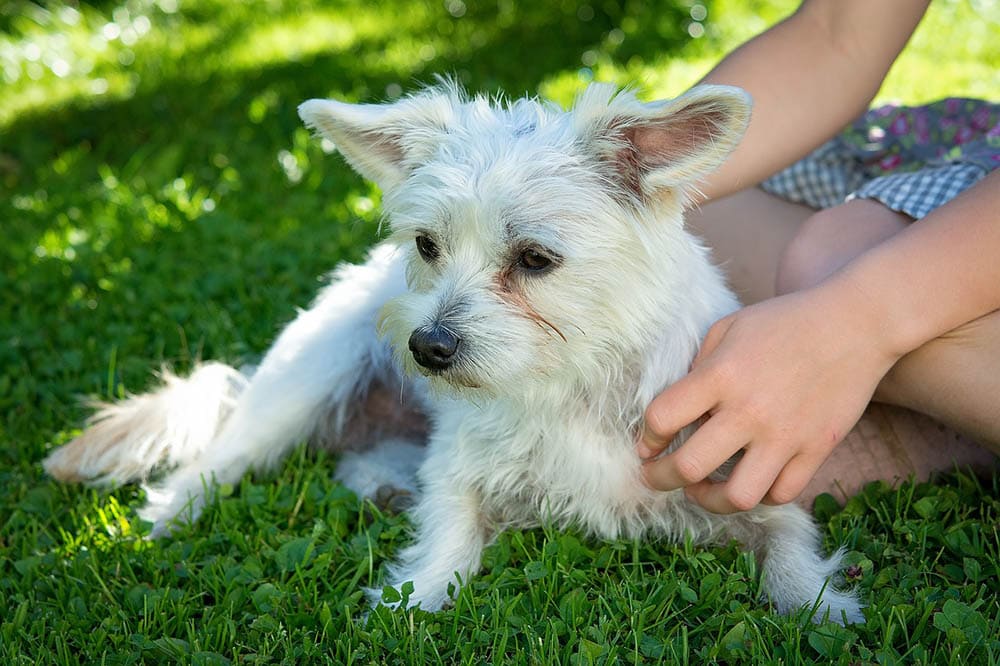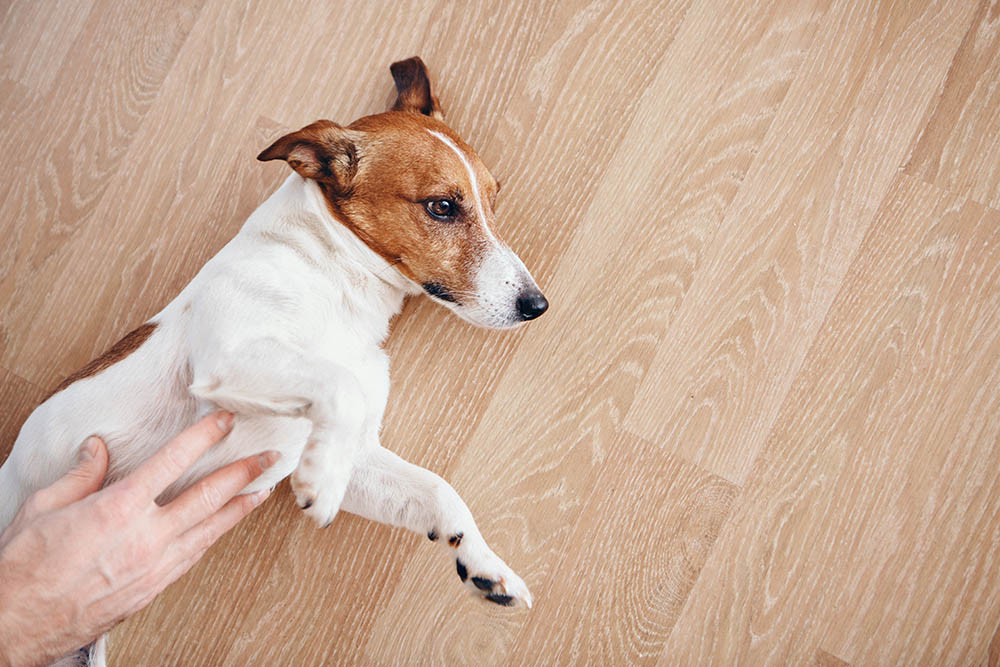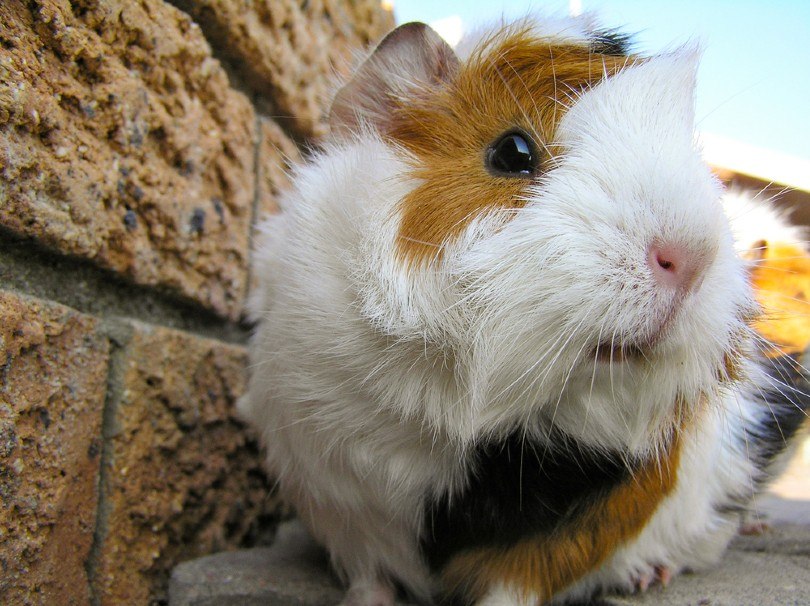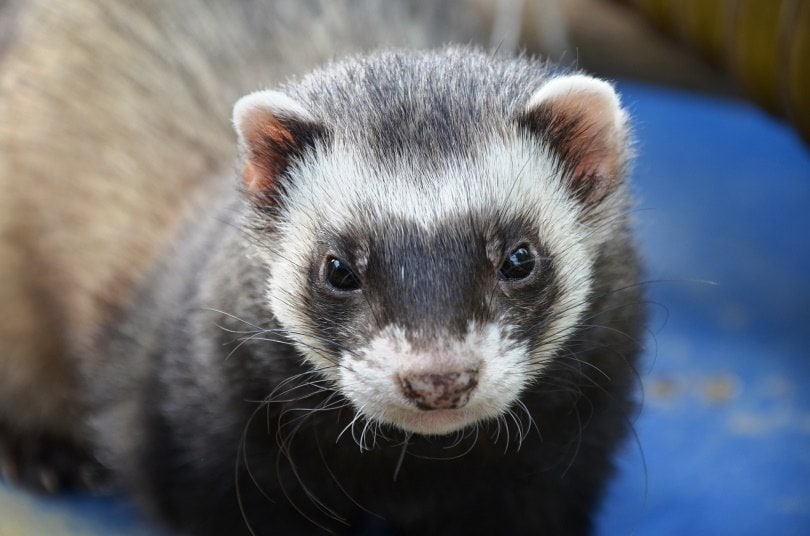VET APPROVED

The information is current and up-to-date in accordance with the latest veterinarian research.
Learn more »Click to Skip Ahead
Tear stains are the reddish-brown stains that can occur on a dog’s face under their eyes. These stains are more noticeable on dogs with light-colored coats, but dogs with dark coats can get them too. While tear stains are not life-threatening, they can be uncomfortable for your dog to deal with. There are several reasons that tear stains occur, but removing them can take time.
In some cases, simply cleaning the stains once won’t be enough. They will keep returning. There’s no simple, fast solution for getting rid of the stains. Keeping them off your dog’s face is a process, and maintenance needs to be done every day for it to be effective. In this article, we look at ways to clean the stains and how to prevent them from coming back.

Tear Stain Deep Cleaning Methods
There are several ways that you can clean the tear stains on your dog’s face. Depending on the severity of the stain, not every method will work for every dog, though. You may have to try a few before you find one that works best. If the stain is thick, dried, and set in, you may have to first loosen the debris by applying warm compresses. Once the gunk is loose enough, you can pull it out gently with your fingers and move on to one of these cleaning methods.
1. 3% Hydrogen Peroxide Solution
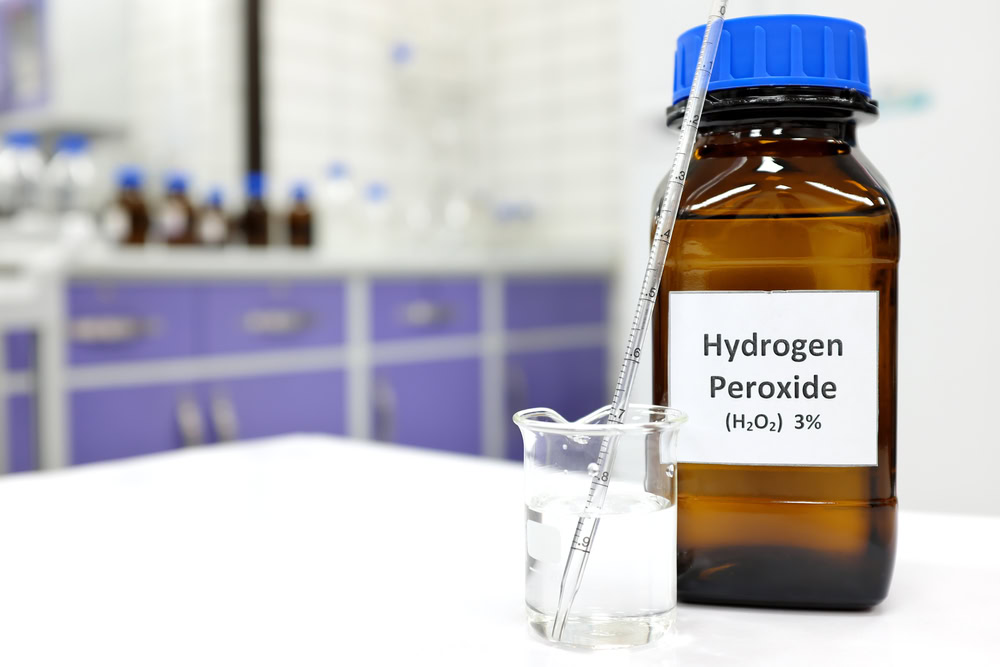
Pour a 3% hydrogen peroxide solution onto a cotton wipe or gauze. Squeeze out any excess, and be careful not to get any solution near or in your dog’s eyes. Apply the gauze to the tear stains on your dog’s face. If possible, let it stay there for a few minutes, all while avoiding contact with the eyes. Try rubbing off the tear stains gently. This process can be repeated once a day until the stains are gone.
Please be aware that hydrogen peroxide is oxidizing and can damage the dog’s eye. So, if you opt for this DIY method, you need to be very careful to avoid the eyes and to make sure your dog does not scrub it.
2. Saline Solution
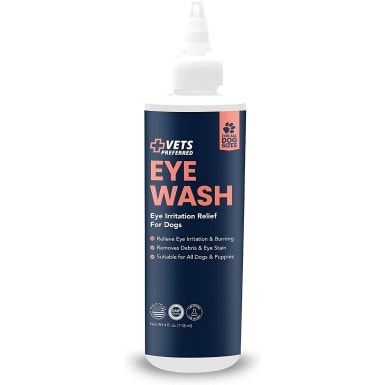
Wash the area with a saline solution for dogs. This is safe for their eyes and can be used to flush out dirt and debris. It will soften and remove any crustiness on the tear stains. The solution can be applied directly from the bottle or used on a cotton ball or soft cloth to break up stains.
3. Tear Stain Remover
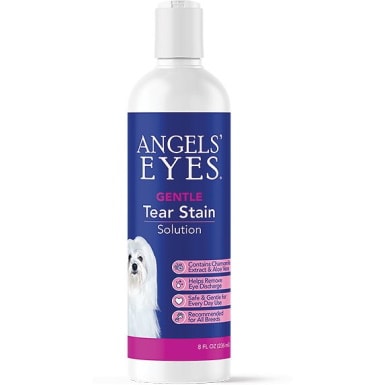
The safest way of doing this is to use a product that is designed to remove these stains. Tear stain removers contain ingredients that remove mucus and discharge without irritating the eyes. They can be used on fresh or dried stains.
4. Boric Acid
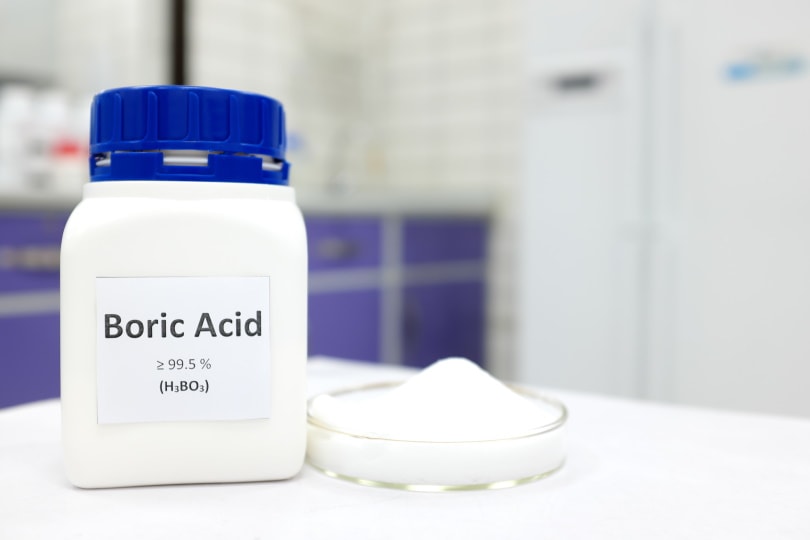
For a homemade tear stain remover, mix 1 tablespoon of boric acid1 in 1 cup of boiling distilled water. Let it cool, and carefully apply it to the stained areas using a soft cloth. This solution should be kept in the fridge and remade every week for maximum effectiveness.
You should consult a vet if you still have questions about your dog or the right products to effectively and safely clean tear stains.

The 5 Simple Steps for Removing Tear Stains for Good
Once you’ve chosen a method to clean your dog’s tear stains, you’ll have to combine that with other maintenance steps to keep them from returning.
1. Do a Deep Clean
Before you can start any maintenance routine, your dog’s tear stains should be thoroughly cleaned. Depending on the severity of the stains, this might mean having the facial hair shaved off by a professional groomer and starting from scratch.
If the tear stains are minimal, you can clean them yourself using your preferred method. Once the stains are clean, you can work to keep them from returning quickly and getting out of control.
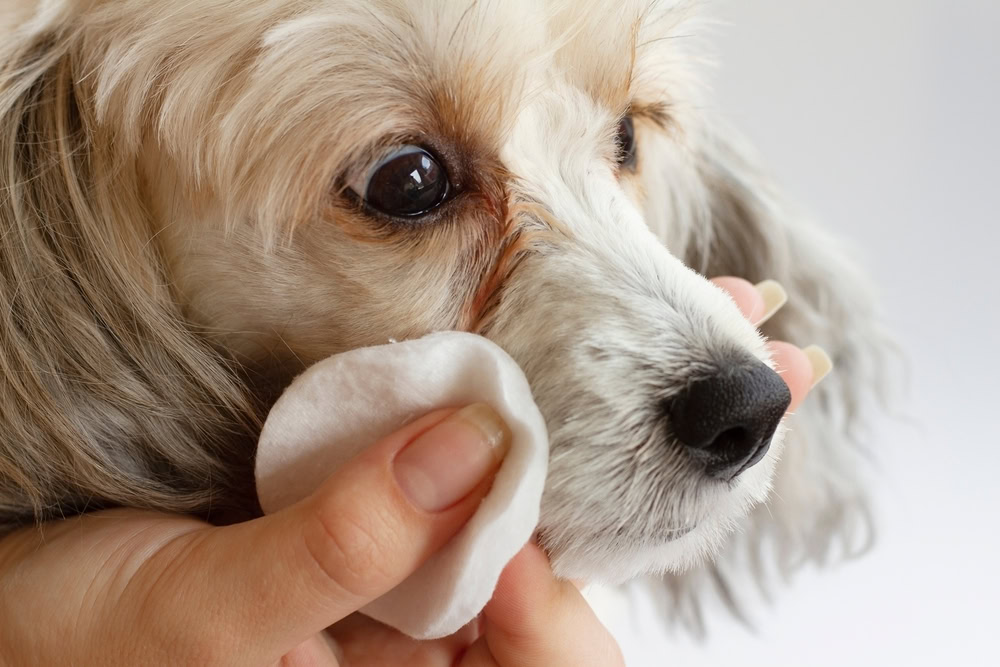
2. Keep Facial Hair Trimmed
If you notice that your dog’s facial hair is growing longer and thus capturing and holding more tears, give it a trim. Long hair can also irritate the eyes if it’s not maintained. That results in even more tears and more stains. It’s best to use clippers instead of scissors to do this. Don’t use scissors around a dog’s eyes. You can leave this job to a professional groomer if you’re uncomfortable attempting it yourself.
3. Clean the Eyes Daily
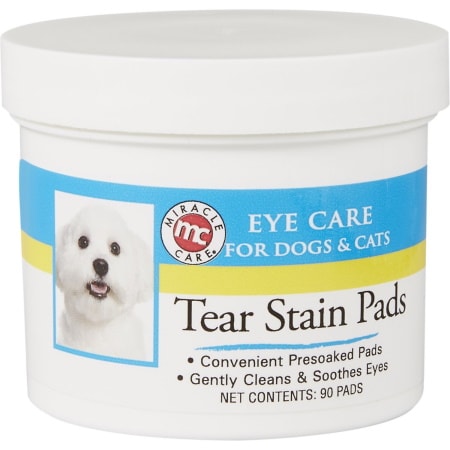
Start a regimen each day of cleaning your dog’s eyes. Make it a time that you’ll remember, like in the morning, after a walk, or after a meal. Use a soft cloth that’s wet with warm water, or for added convenience, use a tear stain-cleaning pad. Wipe the corners of your dog’s eyes, removing any debris that has dripped down the face. Regular cleaning will prevent stains from having a chance to form.
4. Change Potential Stain-Causing Routines
A healthy diet can reduce tear stains in dogs. Be sure your dog is eating the healthiest food that you can acquire for them. Digestive issues can lead to more waste by-products being eliminated through tears, causing more staining.
If you give your dog tap water, consider switching to filtered (but not bottled) water. The minerals in tap water can lead to tear staining. While there is no scientific evidence to support this action, some dog owners add a spoonful of apple cider vinegar to their dog’s water or food.
Make sure your dog’s food and water dishes are always clean. Bacteria can grow on unsanitary dishes and pollute or infect your dog. Tears are a defensive mechanism of the eye to flush out bacteria. Make sure to skip plastic dishes and stick to either ceramic or stainless-steel bowls. Plastic bowls will harbor bacteria in the tiny cracks they develop, leading to facial irritation, inflammation, and even infections, which could lead to more tearing.
- See Also: 10 Best Dog Foods for Tear Stains
5. Visit a Vet
If you’ve tried everything and nothing is working, visit your veterinarian to rule out any underlying medical issues that may be causing the tear stains. They could be due to an eye infection or another condition that can easily be treated. Ophthalmologic conditions, including problems with the eyeballs, eyelashes, eyelids, or tear ducts, can all result in excessive tearing. Your vet will be the best guide to diagnosing and treating each possible condition for the problem.
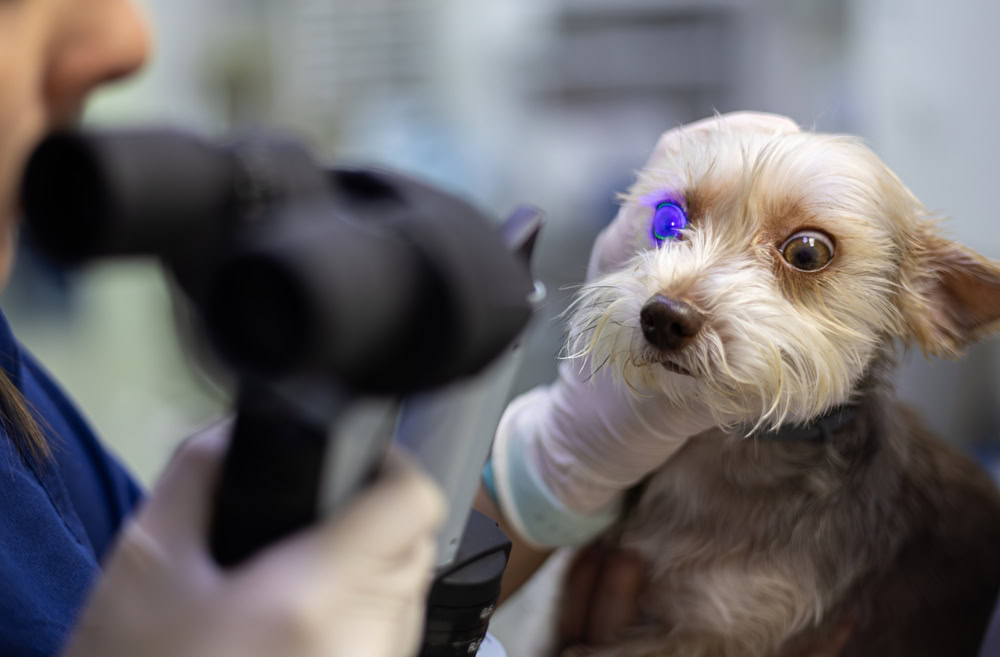

What Are Tear Stains?
Tear stains are caused by excessive tear production in the eyes. This can have many different causes. The teary residue leaks out of the eyes and settles into the hair on the face, where it dries along with any other gunk. Since tear stains are a reddish-brown color, they’re most easily noticed on breeds with light coats.
It is believed that the rust color of the stains may be caused by porphyrin. Porphyrin is produced when a dog’s body breaks down iron molecules. Iron consumed in the diet or as a result of red blood cell breakdown is excreted through the gastrointestinal tract, urine, saliva, and eye tears, so the hair around these areas can become stained.
What Causes Tear Stains?
Tear stains can have many causes, which can be difficult to determine. If you notice that your dog is pawing or scratching at their eyes or you notice that their eyes are red and irritated, take the dog to the vet for an evaluation.
- Allergies
- Poor diet
- Hard tap water
- Teething (during puppyhood)
- Blocked tear ducts
- Dusty or smoky environments
- Infections
- Entropion (eyelash irritation)
- Foreign bodies

Conclusion
Sometimes, no matter what you do, you won’t be able to get rid of your dog’s tear stains for good. Hopefully, though, by using the methods that we’ve suggested, you’ll be able to reduce them and prevent them from recurring. By reducing the buildup each day, you can stop the stains from becoming hard, crusty, and difficult to remove.
If you notice that your dog’s eyes are bothering them, have them seen by a vet. The eyes could be tearing due to an underlying health problem that is easily treated. Once you know what’s causing the stains, you’ll be better able to stop them from appearing.
Featured Image Credit: Pezibear, Pixabay
